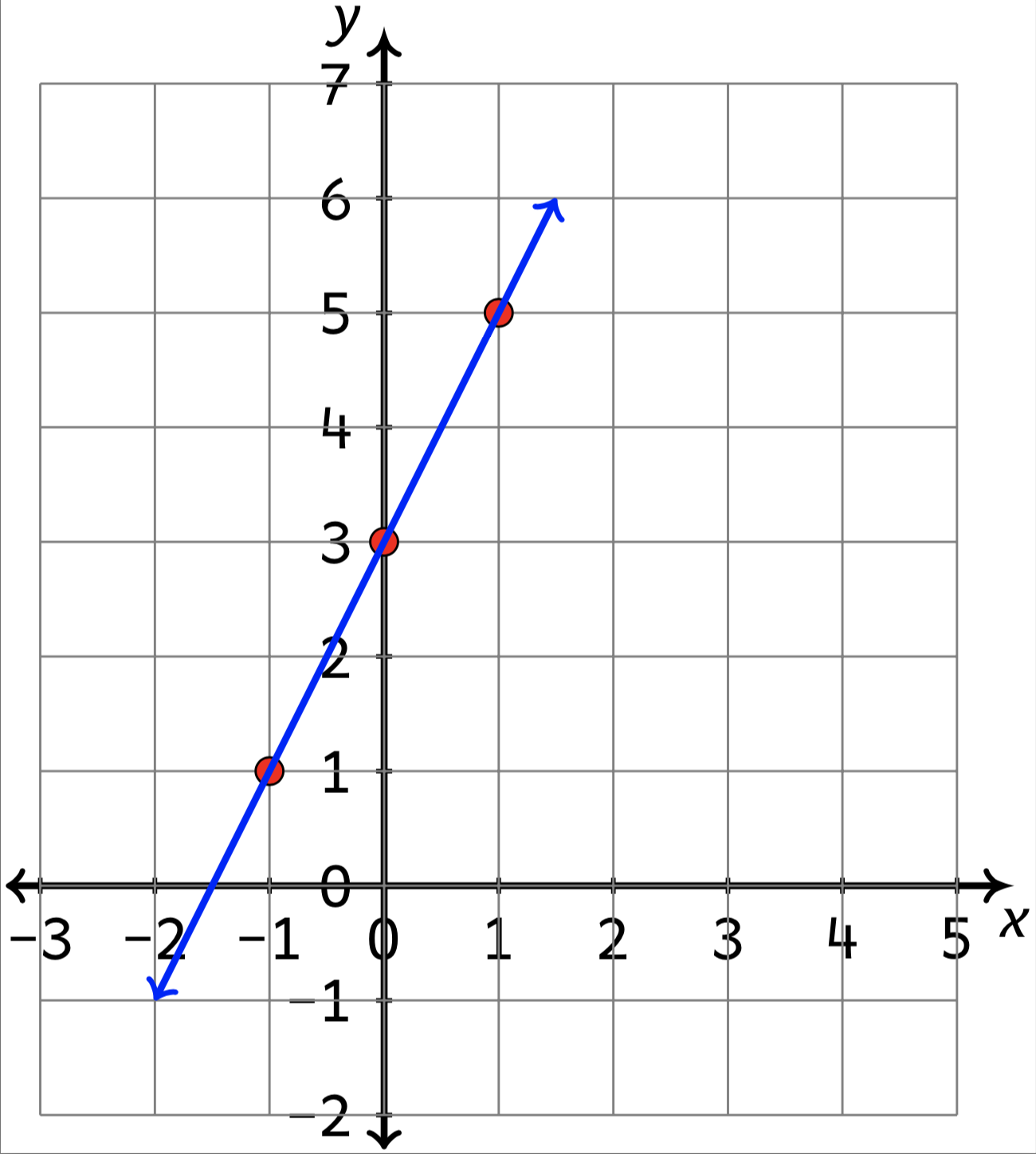
Since the 0 negates the infinity, the line has a constant limit. There is one special case where a limit of a linear function can have its limit at infinity taken: y = 0x + b. Tip: Since the limit goes to infinity when you times infinity by 2, the limit of the function does not exist due to infinity not being a real number. Lim(x→&infin) 2x + 2 = lim(x→&infin) 2x + lim(x→&infin) 2 = ∞ = Limit does not exist Step 1: Repeat the steps as above, but this time solve for the limit as x approaches infinity. Lim(x→0) 2x + 2 = lim(x→0) 2x + lim(x→0) 2 = 0 + 2 = 2 Solving for limits of linear functions approaching infinity.Įxample problem: Find the limit of 2x + 2 as x tends to 0.

Using this logic, the limit is 2 as x approaches 0.
#LINEAR FUNCTION GRAPH PLUS#
The limit of a + b is equal to the limit of a plus the limit of b.The limit of ax as x tends to c is equal to ac.Step 2: Solve for the limit of the function, using some basic properties of linear functions: Step 1: Set up an equation for the problem:Use the usual form for a limit, with c equal to 0, and f(x) equal to 2x + 2. We offer tutoring programs for students in K-12, AP classes, and college.The limit for this function is 0 at x = 0, and ∞ for x=∞ SchoolTutoring Academy is the premier educational services company for K-12 and college students. Interested in math tutoring services? Learn more about how we are assisting thousands of students each academic year. Its reflection will have the slope (3) (-1), or -3. Suppose a line can be represented by the equation y = 3x. If a line has slope m, its reflection will have a slope multiplied by -1. The reflection of a line is similar to the reflection of a figure, as it represents its mirror image. Remember that the reflection of a figure is its opposite across a line of symmetry. All the lines may have their y intercepts at the origin, but the line y = -3x is steeper than the line y = 2x, and the line y = x is not quite as steep. For example, lines of direct variation have the same y-intercepts but different slopes. The line may have a steeper slope or one that is less steep. Graphs of lines can also be changed so they have the same y intercept, but different slopes.

The line y = x is parallel to the other two, as the slope x is still the same, but the y intercept is at the origin. It is as if the entire line with the equation y = x + 3 slid down to fit in the position y = x – 2. The slope of the line x is the same for both lines, but one crosses the y axis at 3, while the other crosses the y axis at -2. Suppose one line has the equation y = x + 3 and another line has the equation y = x – 2. Since the slopes of the lines are still the same, but they cross the y axis at different points, they are parallel. One line can be translated to another line if the y-intercept is changed. The most basic function in the family, f(x) =x, is called the parent function. They form a family because they all follow that basic shape and their lines express the same equation, y = mx + b, the slope-intercept form. The graphs of linear functions all have the same basic shape: a line. Those lines can be transformed by translation, rotation, or reflection, and still follow the slope-intercept form y = mx + b. The graphs of linear functions can be transformed without changing the shape of the line by changing the location of the y intercept or the slope of the line.


 0 kommentar(er)
0 kommentar(er)
